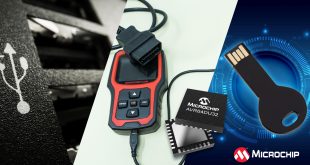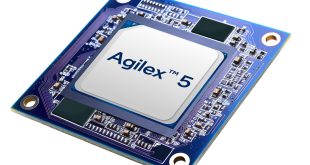 UK based computer board manufacturer Blue Chip Technology has announced the launch of the RM3, an ultra-small format single board computer whose features includes dual high resolution independent displays. The company is describing the launch as the start of a new generation of “Tiny Computer Boards”. The RM3 (RISC Module 3) is, according to the company, considered to represent a new standard for single board computers, offering a feature rich and powerful hardware solution within a very small footprint.
UK based computer board manufacturer Blue Chip Technology has announced the launch of the RM3, an ultra-small format single board computer whose features includes dual high resolution independent displays. The company is describing the launch as the start of a new generation of “Tiny Computer Boards”. The RM3 (RISC Module 3) is, according to the company, considered to represent a new standard for single board computers, offering a feature rich and powerful hardware solution within a very small footprint.
The RM3 is the latest addition to Blue Chip’s Computer On Module range. The new board is built around advanced Dual and Quad Core ARM Cortex 9 based IMX6 technology and has been designed to support a wide range of applications such as digital signage, telematics, industrial control, instrumentation, medical devices and data logging. Offering a low power, fanless performance, the RM3 can be used for a range of portable and battery operated devices. The board can be supplied with a range of peripheral devices and a choice of operating systems.
“The development of the RM3 has been driven by a specific customer requirement for a very small footprint computer board that can handle a very demanding graphics requirement,” said Barry Husbands, Managing Director of Blue Chip Technology. “We have been very impressed with the performance of the new IMX6 device, it really does set a new standard for this type of hardware and its graphics performance exceeds all expectations.”
The RM3’s key functionality includes dual high resolution independent displays (HDMI/DVI, LVDS, RGB), CAN, SATA, USB, UART, I2C and Camera. Current OS support includes Linux and Android operating systems with Windows Embedded Compact 7 and Windows 8 to soon be available.
“Computer on Module” is a concept whereby a single board computer is split into two parts. A “compact core module” containing all the components needed for a bootable host computer – processor, North bridge, South bridge, memory and Flash but without the standard connectors for any input/output peripherals. This COM is sold as an off-the-shelf entity and will have a standardised footprint and set of connectors that mate to an “application specific carrier board” with the system IO and peripherals. The carrier board is capable of accepting any COM in that specific Computer On Module family of boards. Together, the COM and carrier board deliver the functionality of a single-board computer.
“The Computer on Module, COM, concept offers designers and manufacturers design freedom and a fast time to market” said Barry Husbands. “It also enables different products to share similar core modules or maybe, a single product to easily be upgraded. Adopting a COM approach to a range of intelligent devices can also help reduce costs, so it can be a powerful approach to embedded design.”
 CIE Components in Electronics
CIE Components in Electronics



